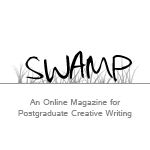Teruel
Jayne Marshall (Oxford University, UK)
Spain is a country full of contrasts, it’s one of the things people from both the inside and the outside love about it. The majesty of Santiago de Compostela’s famous baroque cathedral, presiding over a moody Galician plaza has nothing in common with humid Córdoba and its sprawling mosque, 950 kilometres away in the south, or indeed from the beaches of Andalusia, on the south western coast. And that’s just geography and architecture. Accent and local dialect mean that even native Spaniards from the north and south have trouble understanding one another. At times, this expands beyond language, and into the culture of each place. A holiday in Cádiz at the height of summer will contain two or three dead hours where people disappear for a siesta made obligatory by the heat. Deliveries are not permitted during this time and those that live in apartment complexes are made to speak in whispers. In Galicia, the weather and the northern work ethic could never conceive of such an idea.
As in many capital cities, most people who live in Madrid, even if they are Spanish, are from somewhere else. Drawn by the lure of city life, the promise of successful careers and brighter futures. The kind of life that, with a bit of luck, will lead to a quiet retirement in a country village. In the infernal summer months of July and August, Madrid resembles a ghost town, as the residents flee the heat and return to their native pueblos, leaving the city to the tourists who don’t know any better.
Madrid recedes quickly once you join the M30, the city’s sunken ring road. It used to run alongside the Manzanares River, looping around the capital, and connecting those inside with those outside. When the city’s population started to balloon, the traffic jams became increasingly nightmarish and the solution was to bury the motorway below the city. There it would be left to flow smoothly and silently like the river above. The old roadway was made into parkland and is now popular with Madrileños for picnics, cycling and sunbathing. It has been nicknamed, Madrid Playa, the residents of the high, dry, landlocked city always desperately seeking a little beach life.
Descending to the M30 after navigating the busy Ronda de Atocha, it’s a short drive underground towards the exit for the north east, and Teruel. On emerging out of the city to the sight of pinewoods, it’s not hard to see the M30 as a portal, rather than a ring road, taking travellers from urban to rural, people to emptiness, noise to silence. In short, from one extreme to another. This lopsided distribution of the population in Spain makes competition for apartments in Madrid so fierce that people will pay an extortionate deposit on a flat without even seeing it first, whereas there are towns in the province of Alicante where the roads simply stop, trail off, the need or desire to continue having dried up. Apartments there stay empty for years, the swimming pools half-filled with rain water and debris, the rent per month less than the cost of a reserved parking space in central Madrid.
With Madrid disappearing south, ahead lies the vast, high landscape of Castilla la Mancha, Don Quijote’s land – a land made for wandering and distant horizons. It’s a slow incline towards the province of Teruel, across La Meseta – the plateau – the temperature decreasing with each kilometre. Conurbations become ever more few and far between. Passing through one village, the first sight is of a house with its side completely fallen away, almost as if it had melted, the rooms inside clearly visible and the furniture neat and clean.
Camañas
The road that comes off the A23, and leads to Camañas, is full of nothing. Even the GPS declares it to be a carretera sin nombre. The land is flat and monotonous and when the map claims the village is only three kilometres away there is still nothing as far as the eye can see. It would be a great place for a prison. Escapees would be spotted immediately and the high altitude, making for freezing winters and scorching summers, would further impede any hope of freedom, except perhaps through certain death. Coming from Madrid, where there is always something happening, always people and loud conversations, the silence is the first thing that hits the senses on arriving in Camañas. In all of the villages facing extinction the sound of nothing is enveloping.
Camañas is a village in the region of Aragón, 35 kilometres from the city of Teruel, and 300 from Madrid. It is home to the remains of a 13th century castle, an arched fountain and 150 inhabitants. It is also in danger of becoming a ghost village.
“Tenemos una familia Pakistaní, otra familia de Ecuador.
Muy buena gente. Dan nueva vida al pueblo. Queremos más familias así.”
“We have families from Pakistan, and Ecuador, good people.
They bring new life to the village. We need more families like them.”
The mayor of Camañas, Vicente Gonzalvo, went on national radio, describing how his, and other villages like it in the region were fighting back against depopulation. A few hours later the village website was flooded with petitions from people all over the world. The website, consisting of just one landing page, with hopeful tabs named ‘Tourism’ and ‘Hotels’ that led nowhere, suddenly had 1625 new comments. The comments were from would-be immigrant families wanting to repopulate Camañas with their otherness, families looking for a new start, a quiet and affordable place to live where they would be welcome. And in the case of Camañas, not only welcome, but desperately needed.
The comments make for heavy reading, each a vignette of life as an outsider. One asks: “Please can someone let me know how to emigrate to Camañas? Thank you. I am living illegally in the USA.” Another: “Please email me directions on how I can get to Camañas. I can be there in one week.” Others take more of a self-promotional approach: “I would like to form part of the families that are repopulating Camañas. We are a good family with good habits, my wife and I are both engineers. We have a son who is six years old and we want a better future for him.”
The campaign, Teruel Existe, formed in 1999 to promote transport links between Teruel and the neighbouring cities of Zaragoza and Sagunto. The idea was that better roads and travel connections would give the people of Teruel the chance to live and work in the area without having to relocate, thus preventing the depopulation of the centuries-old villages and communities in the region. The exodus from rural Spain to surrounding cities originally began in the 1950s, and by the 1970s had left the countryside half empty. A lack of investment and incentives to keep the territory populated left many villages in Aragón (as well as other areas like Extremadura and La Rioja) practically uninhabited. The city of Teruel itself holds the unenvied title of least populated regional capital in Spain and the wider region has the fewest number of habitants per square kilometre in the whole of the country, at just 9.6 people.
Since the campaign started up, a new road between Teruel and Zaragoza is close to completion, although Teruel still remains the only city in Spain without a direct rail link to Madrid, and there are other issues yet to be resolved, such as access to quality healthcare, and education. Last year, the city was given a boost from an unexpected source when Ikea used the name ‘Teruel Existe’ to promote new items in their catalogue that were going unnoticed by customers who preferred to stick with Ikea classics. The campaign’s tag line was: “Teruel exists, and so do new items from Ikea.” Television adverts were filmed in the city, beginning with an overhead shot showing a fleet of yellow Ikea trucks making their way through the deserted countryside before arriving at one of the city’s plazas, where they are welcomed by the inhabitants. As part of the series, the adverts highlighted local traditions such as the Ruta del Tambor and El Bombo both Easter celebrations particular to Teruel, and did much to help bring the campaign into the national consciousness.
The city of Teruel remains alive. On Saturday evenings the plazas fill with people. In this way it could be any other town, city or village in Spain, where life is lived in the streets and the sense of community, of being truly social, is the fundament for everything. There is fight in the people too. One cold Sunday morning in February Teruel Existe organised a new demonstration to protest the lack of specialist doctors in the city. Placards declared: “Teruel exists, and so does bronchiectasis.” It seems like the whole city was at the demonstration. People streamed over the old viaduct, heading towards the Plaza Torico, the cobblestones underneath no longer visible, only a mush of faces and banners. This isn’t just a campaign for the hard-core handful, this is an issue affecting everyone. Everyone is aware of what’s at stake, and so everyone does their part. It is not uncommon to hear the phrase, ‘We are fighting for our lives’.
Since Teruel Existe initially raised awareness of forgotten towns and villages, new campaigns have bought other ideas and solutions to the table. Statistics show that the number of foreigners is growing faster in Spain than native Spaniards. In the province of Teruel, the number of immigrants has increased by 2.2% since 1998, whilst the Spanish population has decreased. Los extranjeros – the strangers, or foreigners – began arriving to rural Spain in the 1990s, finding work in the agricultural industry by filling vacancies for the dirty and dangerous jobs that no-one else wanted to do, and since then they have contributed to a timid rejuvenation of the rural population. Many organisations have noticed, and seized on this as an opportunity to refill dying villages with immigrants looking for better opportunities. One organisation which facilitates the relocation of immigrants to these ghost villages is the Fundación Cepaim. Vicente Gonzalvo, ex-mayor of Camañas and representative of the association in Aragón, puts it plainly and clearly: “We want to make dead villages into living villages.” Adding, to address those that would like to keep their villages and towns more monocultural: “It’s very important that the village natives, those that were born in the countryside, bear in mind how fundamental it is for people to come here and keep the population growing.”
One of the success stories of the Fundación Cepaim is Said al Ghoury, a Moroccan national. His portrait heads up an article about the charity’s successes in Spain’s main newspaper, El País. He looks proudly out at the reader from his vantage point outside the village bar in Visiedo, ten kilometres from Camañas. He came to Visiedo with his wife and children from Barcelona, after losing his job when the econonic crisis hit. María Ángeles Zaera, the mayor of Visiedo, was desperately looking for a family with young children to move to the village, so their school could remain open. Ghoury, with his two daughters, was chosen as the best candidate. He works as a caretaker for the village, cleaning up the streets and generally keeping an eye on things. Chatting with the locals at the only bar in the village, the owner says of Ghoury: “He knows everyone, he is just like any other Spaniard. He even plays guiñote!”
Visiedo
The N420 runs from Cuenca towards Teruel, and passes by Visiedo. It is interspersed with abandoned railway stations, the road itself having been plotted along the route of the old line. The station buildings are decorated with glossy green tiles and declare the (forgotten and irrelevant) names of each stop, but they are falling apart, relics now. Their wasted beauty is sad and ironic, as the campaign for Teruel Existe looks to improve rail links in the region.
Before entering Visiedo there is a closed down petrol station, almost totally covered with vines, the forecourt roof held up by a rusting cherry-picker. It is so picturesque in its way, and so pretty against the blue sky, that it could almost be a postcard for this place, for this zone, promoting a new kind of struggle tourism for those that want to come and see how rural life really is, with all its charms and challenges.
After the garage, it’s a short distance to the main plaza in Visiedo, which is immediately familiar from the El País profile. The square is home to the doctor’s surgery (only open three days a week, for two hours at a time), the town hall, and of course the village bar. As in Camañas, the bar is part of the ‘Multi-Servicio Rural’, which subsidises them, allowing them to keep running as places for the community to meet and relax. Also immediately familiar is Ghoury, sitting at a table with a café solo, just as he was when posing for the journalists’ cameras. It’s strange to find the place and its people are exactly as described on the printed page. Life here must not allow for much variation.
Inside the bar, however, the same barman who had described Ghoury, as ‘just one more Spaniard’ is nowhere to be seen. The man serving in his place, has a softness of accent and a use of Spanish that belie origins which are clearly not Aragonese. It’s pleasant to think he was perhaps one of the 1625 people commenting on the Camañas website, petitioning to make their way over from America, or someone else helped by the Fundación Cepaim. There is no one in the bar, and the television shows a programme about tractors.
Outside on the terrace, the February sun is surprisingly and nicely warm. Ghoury goes inside and orders another coffee in perfect Castellano. Two cats walk by. They appear to be conversing, looking at one another, and then ahead, then back at each other. A few minutes later, two old men arrive, doing exactly the same thing. A few more minutes after that some more men arrive. Then three cats stroll by. It seems to be a village populated by men and cats. Ghoury goes inside the bar to join the men, leaving the cats outside to stretch out on the terrace. A card game starts up, guiñote one can only assume.
***
Walking up to the remains of the castle at Camañas, there are a few cars parked on the street, but no people. The view from the castle, which is high up at the top of the village, illustrates how subsumed by the meseta the village really is. Down below somewhere a dog barks, the sound carrying up and across, who knows how far. Descending to the fountain, the centre of the village, the sound of voices becomes audible for the first time. Following the sound leads to a door, next to which there is a table and chair, home to a bowl of half eaten olives and an empty beer bottle. A sign reads: ‘Multi-Servicio Rural’ with the icon of a cocktail, a tourist information logo, and a knife and fork. Of course there is a village bar, every ghost village needs one. Inside there is another sign, a more characterful, insistent one:
“Abrimos, cuando llegamos, cerramos cuando nos vamos
y si vienes y no estamos, es que no coincidimos.”
“We open when we arrive, we close when we leave
and if you come and we aren’t here it’s because we didn’t cross paths.”
The bar is where everyone’s paths cross, where all the people and all the sounds are housed. The staff consists of two pre-teenage boys and the beer is local. The voices are loud and mixed together, so it impossible to tell one accent from another. Whatever they are all doing here, it seems to be working. People look happy.
The story of Teruel and its villages is a story about nothing. The landscape is full of nothing. The villages have no one in them, and the only sound is silence. Nothing is also what is motivating these villages and giving them fight. Here, identity – both for natives and immigrants – is up for grabs. Both the new people and the old share a belief in the future, in the idea that it can exist for them. From nothing must come something new, and what that will be called is yet to be named.
The language that these places and people have in common is a visual language. The villages occupy empty, isolated land, high up above sea level, or in the middle of a vast plane. A little dejected, their streets are quiet, reverent to the geography that surrounds them, making up a network of islands stranded in a sea of yellow earth. They tell visitors: our existence is our message. We are here, we are still here:
Mis pasos en esta calle
Resuenan
En otra calle
Donde
Oigo mis pasos
Pasar en esta calle
Donde
Sólo es real la niebla
-Octavio Paz
Sometimes nothing can say a lot: the awful silence after an argument, or that infamous calm before the storm. Take a deep breath in; feel the stinging freshness of unpolluted air in your lungs, the sun at your back, the quiet resting in your ears. Let the nothingness become solid and reassuring – something to believe in.
Jayne is a fiction and creative non-fiction writer awaiting graduation from the MSt in Creative Writing at Oxford University, with distinction. She has explored various topics in her stories and essays, such as language and identity, Palestine and orthodontics. Her work has been published – in English and Spanish – in magazines in the UK, the USA, India, Australia and Spain. Jayne is from the UK but now lives in Madrid, Spain.






